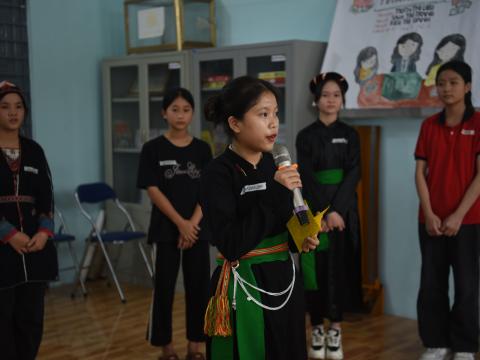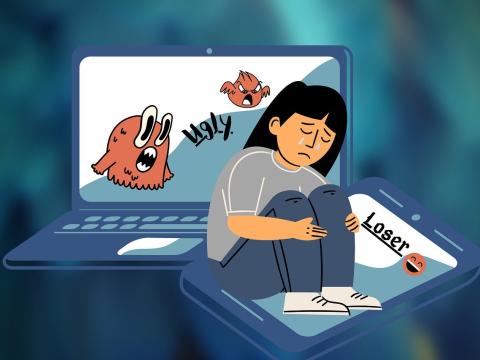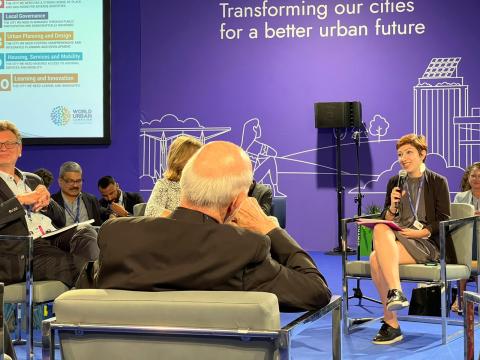
What children consider innovation will surprise you
Faith explains how child-led innovation is the key to improving the lives of children in East Asia and around the world
Innovation in child participation starts when we stop imposing what we think is best for children and flourishes when we sincerely start listening to what children have to say. Now, the big question is – are we really listening?
Just this month, I had an awe-inspiring conversation with a group of children and young leaders from East Asia. The purpose was to engage them in the concept designing of a meaningful and sustainable child participation space in which they can be involved. I asked them, “How do you picture innovation in child participation?”
While there were many technically-sound concepts shared about what children thought about innovation, I was taken aback by the brief and direct answer from Sideth, a 16-yearold boy from Cambodia. He simply said, “Innovation in child participation is to add FUN”. In one short sentence, and through the lens of a child, it simplified for me the complexity of innovation in child participation.
As innovation can be the product and process itself, the fun aspect is a component mostly overlooked, but critically needed to spark the interest of a child. As we all know, innovation is the key driver of change. It may not immediately respond to glaring issues at hand, but is one of the most effective approaches in co-creating solutions with children on issues that most affect their lives. Having the children lead should be the way forward if the goal is meaningful change.
Inevitably, we’re left asking ourselves, “What are the essential elements needed for innovation to exist in child participation?”. These are the three basic things we need to remember:
First, and foremost, child participation requires creating a psychological safety zone in which children feel safe to share their thoughts. A safe space encourages children and young people to be creative, allowing them to fail without fear of being ridiculed, and most importantly, motivates them to recreate again, learn and succeed. When children and young people feel psychologically safe, they are able to exercise their creativity and engage in meaningful experiences and interactions throughout life1. This concept is anchored in the UN Convention of the Rights of the Child (UNCRC) as it remains a powerful reminder that children and young people have the right to be listened to and taken seriously.
Second, we need to collaborate locally and globally. Namwan, a 13-year-old girl from Laos said it best when she expressed in the consultation that she wants to learn from other cultures and ethnicities. She said to me, “I wonder what other communities looks like, and what children like me in other countries do every day.” This simple and pure question gives us the insight that children want to collaborate and help others, not only locally but even globally. If we look closer, there is wisdom in wanting to know what issues are affecting children, not only locally, but globally as well. Issues like climate change, migration, child hunger and malnutrition, are all impacting children around the world on a daily basis. Innovation comes when we collaborate globally, maximize technology and share locally-effective solutions globally across all borders.
Lastly, we must invest time, talent and treasure. From a business perspective, investing in innovation is crucial, not only to survive, but to grow, and eventually thrive. Similarly, if we want to see growth in our young leaders, we need to invest in child participation and be intentional about investing in our young people. To quote former UN Secretary General Kofi Annan, “Young people should be at the forefront of global change and innovation. Empowered, they can be agents of development and peace. If, however, they are left on society’s margins, all of us will be impoverished. Let us ensure that all young people have every opportunity to participate fully in the lives of their societies. “
In my role at World Vision, I see that innovation in child participation exists through intentional strengthening of three key domains – child participation in programming, child participation in advocacy and child participation in decision making. Through these, we have child-led mobilizations, child-led policy wins, child-led research and even intergenerational dialogue between children and World Vision’s senior leadership. We value the voices of children, their lives, and their futures; their voices and opinions will always inform our programming interventions and designs.
World Vision East Asia is deeply committed to the most vulnerable children by investing time, resources and manpower to elevate child participation. We are calling on the global community to invest in young people in Asia and the Pacific which is home to 60% of young people in the world2. These young people are tomorrow's future leaders, shaping urbanisation trends and global action. We call for your support in this mission as investment in young people is an investment in economic growth and social change.
Learn more about World Vision's work in the East Asia region here
Faith Richelle Bullecer-Sy is World Vision East Asia Regional Office's Child Participation and Mobilization Advisor.

